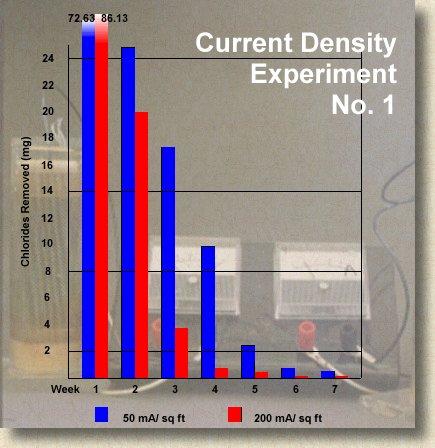 |
|
 |
Electrolysis is the standard conservation treatment for iron artifacts recovered from salt water. The idea is to drive out the chlorides (salts) that have penetrated the metal. Unless these salts are removed, the artifact will degrade into an unrecognizable pile of rust. We were suprised to learn when we researched the literature that despite decades of using this method, no one had determined the optimal current density for the electrolytic reduction of iron artifacts. So we did. |
|
CONSTANT CONCENTRATION WOOD IMPREGNATION TANK
|
|
|
As odd as it may sound, sugar is good for conserving waterlogged wood. It helps support the wood's cellular structure which has collapsed during centuries of immersion. We have developed a method to better maintain a constant concentration of sucrose to impregnate wood, giving artifact conservators more predictable results. The 1000-year-old Lucayan canoe paddle found on Grand Turk island began sucrose treatment in January 1999. While sugar provides cell support for the wood, it also provides nourishment for organisms we do not want growing in our treatment tanks or on our conserved artifacts. Rohm and Haas Company generously donated a supply of Kathon CG/ICP to add to the sugar solution to prevent unwanted fungi, algae, bacteria, and slime from colonizing our lab and museum displays. |
 |
Ships
| Exploration | Discovery
| Research | Our Mission
Headquarters | Exhibits |
Turks and Caicos Museum | About
Us | Our Network | Contributors
| Underwater Links
| Our Publications
Shipwreck Excavations | Columbus's
Lost Ships | Archival Documents | Conservation
| Ancient Techniques | Replicas
Experimental Archaeology

